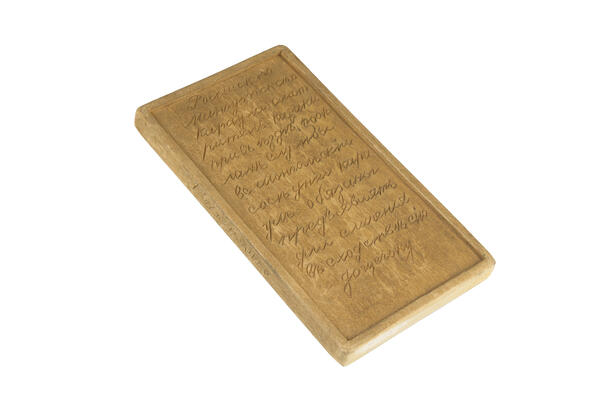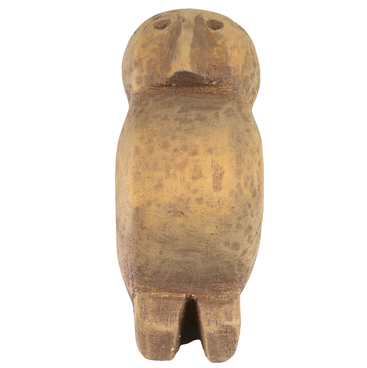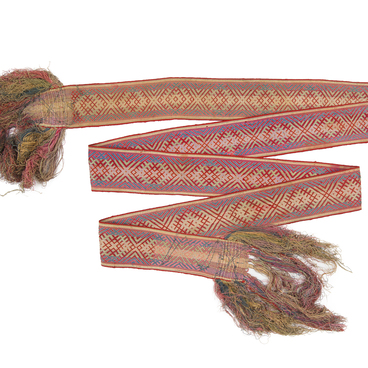The text in Mongolian on the reverse side reads: “The joined two parts of the good wood form a pass (‘ev mod’) for official business between the chief (‘zangi’), the officer (‘hundu’), the soldiers of the Mongol guard Berkhe and the neighboring Russian guard, who have established good relations between them.”
The “good wood” mentioned in the text was a symbol of friendship and mutual understanding between the Mongol and Russian populations who lived along the border. On the edges of the pass, border posts are indicated on both sides: the name of the Russian guard post “Mangutsky” (that is, located in the village of Mangut) is inscribed on the left edge. On the opposite side, one can see the name of the Mongol guard post “Berkhe”, meaning “rugged, remote terrain”.
The Mongols called such passes “ev mod”, a term translated as “an exchange plank”. People who lived along the border told many stories and provided a lot of information about this document.
The plank was split into two halves. One half was permanently kept in the Russian border post and the other half — in the Mongol one. Every year the sides negotiated and discussed people who had illegally crossed the border, cattle raiding, and important trade issues. As the guards did not know each other personally, the pass meant that its holder was a representative of the guard and could participate in negotiations. Before their meetings started, the halves of the plank were put back together to check that there were no intruders.
The pass from the collection was used at the border in the Transbaikal area. In 1896, the military governor of the Transbaikal Oblast, Major-General Evgeny Matsievsky, donated it to the museum of the Chita branch of the Priamursky Department of the Imperial Russian Geographical Society. This museum is presently known as the Transbaikal Regional Museum of Local Lore.



